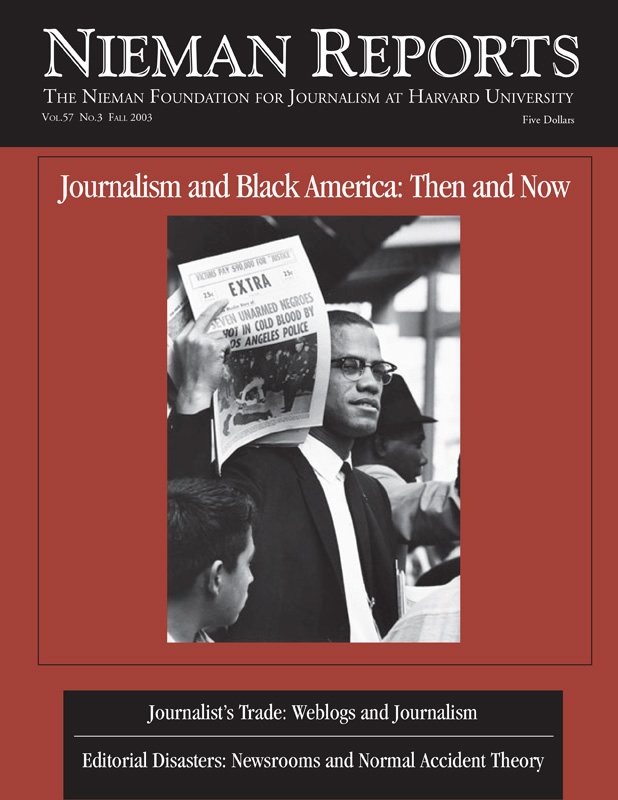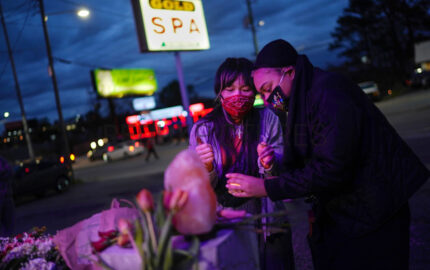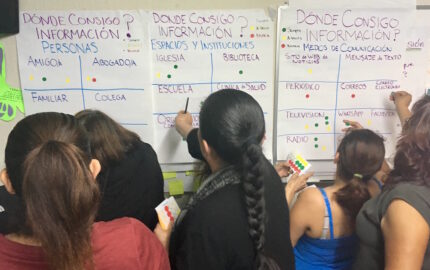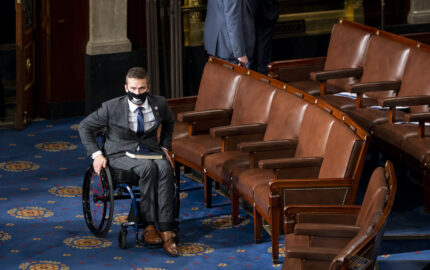Remember the Kerner Commission? It’s surprising how few people do, even among those who report news about the issue of race relations that this 1968 report addressed.
In local TV news, we seem barely able to remember yesterday’s assignment as we scramble to our next live shot. So it’s laughable to imagine reporters stopping during their busy day to contemplate the race riots of the 1960’s and how a group of presidential appointees—the Kerner Commission—reported back to the nation about its racial divide and blamed it, in part, on the mainstream white media’s failure to report about “Negro” life and issues.
So it was scandalous (that it had taken so long) and extraordinary (that such an effort was about to be made by our station when few newspapers and fewer TV stations were doing so) when management at KRON-TV in San Francisco decided in 1997 to begin a yearlong project to report about race. Without such efforts being made by news organizations, North Carolina State University professor Robert Entman, who studies news and race, contends that blacks and other minorities are still being largely excluded or stereotyped, while the lives of whites are portrayed in a broader range—the good, the bad, and the usual.
KRON’s “About Race” project set into motion an evolving growth in our newsroom that continues today. This project changed not only our approach to news coverage but also affected the lives of many on our staff. The initial goal of “About Race” was to reframe our reporting to deemphasize conflict, sensationalism and finger-pointing and focus on information that would help viewers better understand and deal with race in their daily lives.
We began the project by asking two basic questions: What is race? Where does prejudice come from? Our stories then expanded to examine topics such as the roles race plays in religion, education and the workplace. Reporters also looked at interracial marriage and the lives of multiracial children. In time, we even produced a two-part series on how television news affects race relations.
Talking About Race
I was assigned to be the lead producer of “About Race,” a decision that requires a brief explanation. In the early 1990’s, minority staffers were trying to introduce a “rainbow Rolodex” into the newsroom. I was one of several white staffers who quietly grumbled about “political correctness” as this idea was put forth. Without widespread support, and in a majority white workplace, the Rolodex project stalled.
Soon after, I was teamed with a black video editor to co-produce a documentary about the history of African Americans in baseball. I thought I was a well-intentioned, racially sophisticated and sensitive guy. So it shocked me when our increasing disagreements led to a blow-up: she accused me of being racist, and I called her incompetent. At this point a little counseling might have helped, but we really didn’t know how to talk about race at our station. Management removed her from the baseball documentary, and I finished without her.
She and I didn’t speak again until the “About Race” project started four years later and—before management realized its mistake—she was assigned as tape editor. At this point, the two people with probably the worst personal race relations in the building were going to be reunited for a lengthy, high-pressure project on race relations.
At her suggestion, we took a long, long walk and decided we didn’t have to like each other, but we had to learn how to talk about our differences more honestly. The fact is, I had a lot to learn about the different realities race can create for people. When I was talking with a black man about that difference he said to me: “When you wake up in the morning you don’t have to say to yourself, ‘I wonder, what’s going to happen to me because I’m white?’ But somewhere inside my brain that question is always hanging.”
In working together on “About Race,” she and I ended up living the very subject we were reporting on. Through fighting, talking, listening, we eventually reshaped our pain and differences into an unlikely friendship that has grown through six more years of collaboration. Not a happy ending, exactly, more like a work in progress.
Early in the “About Race” project, news director Dan Rosenheim assigned a team of 15 staffers to examine KRON’s overall coverage of race as well as racial attitudes inside the newsroom. At the first meeting of our so-called “race committee,” a Filipino-American cameraman calmly stated that KRON was the most racially segregated place he’d ever worked.
Now at this point you might be picturing racism flowing through the halls of KRON like hot lava. Not so. KRON has always enjoyed the reputation of being a friendly workplace. So when he made his statement—and other non-whites nodded—the whites in the room reacted with stunned protests. The discussion could have quickly disintegrated but, instead, for the first time at our station, a diverse group of journalists began talking about race—haltingly, uncomfortably—but with the frank curiosity we typically bring to less threatening topics. As we took those wobbly baby steps, we should have had a trained facilitator to help us, but one wasn’t there. Nonetheless, the race committee and the “About Race” project began to slowly change our company’s culture, exposing hidden fault lines and reducing tensions.
Our news coverage changed, too. For example, the race committee’s content audit showed that our news relied heavily on white experts. The committee recommended expanding our sources. Suddenly the previously pooh-poohed “rainbow Rolodex” became solid policy that all of us could support.
We documented this process as part of a two-part series titled “News and Race,” by devoting an extraordinary 24 minutes on the 6 p.m. news. The suggestion of examining ourselves in public generated even more newsroom conversation because our standard practice, as journalists, is to look at others, not at ourselves. Some staffers thought “News and Race” would be a self-serving whitewash, while management worried about exposing dirty laundry.
Ultimately the news director felt we were no better or worse than most companies and that showing our racial difficulties would spark broader public discussion. But it was not an easy decision. Rosenheim was clearly nervous about the scripts, as were all of us who worked on these stories. Nevertheless, he kept a cautious distance, giving us support instead of interference.
A few days before we broadcast this series, Rosenheim showed it to the newsroom. After they’d viewed it, people voiced a broad range of opinions, which was another stunning example of change from the safe silence of years past. While concerns were expressed that we didn’t dig deeply enough, the tone of the comments was generally positive, as I sensed communal pride in seeing us tackle such tough issues.
The Diversity Committee
By any standard, the “About Race” project was a success. Audience response was huge and overwhelmingly positive. We extended the project for a second year, producing a total of two dozen in-depth news pieces. More than 400 teachers wrote asking for copies. KRON won a Peabody Award, the Pew Center’s James K. Batten award, three consecutive Unity Awards from the Radio-Television News Directors Association, and repeated recognition from Columbia University Graduate School of Journalism’s annual workshops on race and ethnicity.
This collective effort could not have happened without visionary management. But in 2000, KRON was sold and that management replaced. Some 20 staffers called a meeting with the new bosses and bluntly asked whether KRON would continue its commitment to racial issues. The answer was yes.
With that assurance, staffers formed their own grassroots “diversity committee.” Here’s how it works. We meet at nine o’clock every Thursday morning to brainstorm story ideas. These gatherings supplement the regular news planning meetings. Anyone in the station is invited to come or submit ideas. About eight of us attend regularly. While the focus is still often about race, we also look at issues related to poverty, immigrants, gays, religion, women, seniors and people with disabilities. Besides “issue” stories, we also look for good features, or simply ways to include a wider variety of folks in daily stories. Often we are able to provide background or context that news planners miss in their daily rush. After September 11, 2001, for example, we helped report in depth about Bay Area Afghan and Muslim communities.
All of this means more work for committee regulars, who still have other duties and deadlines. We make this extra effort because it feels right, but also because we love getting hold of a good story, and there are whole veins of untapped gold out there. Some “diversity” stories we’ve managed to get covered include a look at how playing basketball has connected the Japanese-American community for almost a century. And there were the ones about how school segregation in America was first challenged by a Chinese-American girl in San Francisco and how disabled people are trying to build “wheelchair ramps” on the Internet. We’ve also brought to the attention of viewers that Iraqi Americans have been broadcasting radio and television to Baghdad from the farmlands of California for three decades.
The diversity committee has its detractors—people who never attend but see us as marching in lockstep to a mandate of political correctness. A white producer calls us “The Politburo,” and another white, mid-level news manager was upset when we suggested a new, more cautious policy for identifying the race of crime suspects. “We’re supposed to be journalists,” he complained, “not social workers.” Occasionally, we have to dodge and weave to get stories on the air—actions that one person on the committee refers to as “drive-by diversity.” For example, one committee member is in a position to assign daily news crews. When she sees some rare downtime in the schedule, she can often dispatch a crew to a story that our committee has found. We also have a special projects unit that can bypass the daily news apparatus.
But when push comes to shove, we still need the backing of management. Thanks to news director, Stacy Owen, race and diversity remain on our newsroom’s agenda. In KRON’s annual reports to the Federal Communications Commission, the coverage category of “race, diversity and civil rights” has more than doubled since the committee started, from about 25 stories a year to more than 50.
Beyond those numbers, I believe that when news organizations make ongoing efforts to recognize, understand and reflect the variety of people and issues in their community, those who work for them become better jour-nalists and possibly—to the horror of hard-bitten reporters everywhere— better human beings.
Craig Franklin is a news producer at KRON. The station’s continuing efforts to cover race and diversity have relied on several organizations, including the PEW Foundation’s Project for Civic Journalism, the Poynter Institute for Media Studies, the Robert C Maynard Institute for Journalism Education, and Columbia University Graduate School of Journalism’s “Let’s Do It Better Workshops.”
In local TV news, we seem barely able to remember yesterday’s assignment as we scramble to our next live shot. So it’s laughable to imagine reporters stopping during their busy day to contemplate the race riots of the 1960’s and how a group of presidential appointees—the Kerner Commission—reported back to the nation about its racial divide and blamed it, in part, on the mainstream white media’s failure to report about “Negro” life and issues.
So it was scandalous (that it had taken so long) and extraordinary (that such an effort was about to be made by our station when few newspapers and fewer TV stations were doing so) when management at KRON-TV in San Francisco decided in 1997 to begin a yearlong project to report about race. Without such efforts being made by news organizations, North Carolina State University professor Robert Entman, who studies news and race, contends that blacks and other minorities are still being largely excluded or stereotyped, while the lives of whites are portrayed in a broader range—the good, the bad, and the usual.
KRON’s “About Race” project set into motion an evolving growth in our newsroom that continues today. This project changed not only our approach to news coverage but also affected the lives of many on our staff. The initial goal of “About Race” was to reframe our reporting to deemphasize conflict, sensationalism and finger-pointing and focus on information that would help viewers better understand and deal with race in their daily lives.
We began the project by asking two basic questions: What is race? Where does prejudice come from? Our stories then expanded to examine topics such as the roles race plays in religion, education and the workplace. Reporters also looked at interracial marriage and the lives of multiracial children. In time, we even produced a two-part series on how television news affects race relations.
Talking About Race
I was assigned to be the lead producer of “About Race,” a decision that requires a brief explanation. In the early 1990’s, minority staffers were trying to introduce a “rainbow Rolodex” into the newsroom. I was one of several white staffers who quietly grumbled about “political correctness” as this idea was put forth. Without widespread support, and in a majority white workplace, the Rolodex project stalled.
Soon after, I was teamed with a black video editor to co-produce a documentary about the history of African Americans in baseball. I thought I was a well-intentioned, racially sophisticated and sensitive guy. So it shocked me when our increasing disagreements led to a blow-up: she accused me of being racist, and I called her incompetent. At this point a little counseling might have helped, but we really didn’t know how to talk about race at our station. Management removed her from the baseball documentary, and I finished without her.
She and I didn’t speak again until the “About Race” project started four years later and—before management realized its mistake—she was assigned as tape editor. At this point, the two people with probably the worst personal race relations in the building were going to be reunited for a lengthy, high-pressure project on race relations.
At her suggestion, we took a long, long walk and decided we didn’t have to like each other, but we had to learn how to talk about our differences more honestly. The fact is, I had a lot to learn about the different realities race can create for people. When I was talking with a black man about that difference he said to me: “When you wake up in the morning you don’t have to say to yourself, ‘I wonder, what’s going to happen to me because I’m white?’ But somewhere inside my brain that question is always hanging.”
In working together on “About Race,” she and I ended up living the very subject we were reporting on. Through fighting, talking, listening, we eventually reshaped our pain and differences into an unlikely friendship that has grown through six more years of collaboration. Not a happy ending, exactly, more like a work in progress.
Early in the “About Race” project, news director Dan Rosenheim assigned a team of 15 staffers to examine KRON’s overall coverage of race as well as racial attitudes inside the newsroom. At the first meeting of our so-called “race committee,” a Filipino-American cameraman calmly stated that KRON was the most racially segregated place he’d ever worked.
Now at this point you might be picturing racism flowing through the halls of KRON like hot lava. Not so. KRON has always enjoyed the reputation of being a friendly workplace. So when he made his statement—and other non-whites nodded—the whites in the room reacted with stunned protests. The discussion could have quickly disintegrated but, instead, for the first time at our station, a diverse group of journalists began talking about race—haltingly, uncomfortably—but with the frank curiosity we typically bring to less threatening topics. As we took those wobbly baby steps, we should have had a trained facilitator to help us, but one wasn’t there. Nonetheless, the race committee and the “About Race” project began to slowly change our company’s culture, exposing hidden fault lines and reducing tensions.
Our news coverage changed, too. For example, the race committee’s content audit showed that our news relied heavily on white experts. The committee recommended expanding our sources. Suddenly the previously pooh-poohed “rainbow Rolodex” became solid policy that all of us could support.
We documented this process as part of a two-part series titled “News and Race,” by devoting an extraordinary 24 minutes on the 6 p.m. news. The suggestion of examining ourselves in public generated even more newsroom conversation because our standard practice, as journalists, is to look at others, not at ourselves. Some staffers thought “News and Race” would be a self-serving whitewash, while management worried about exposing dirty laundry.
Ultimately the news director felt we were no better or worse than most companies and that showing our racial difficulties would spark broader public discussion. But it was not an easy decision. Rosenheim was clearly nervous about the scripts, as were all of us who worked on these stories. Nevertheless, he kept a cautious distance, giving us support instead of interference.
A few days before we broadcast this series, Rosenheim showed it to the newsroom. After they’d viewed it, people voiced a broad range of opinions, which was another stunning example of change from the safe silence of years past. While concerns were expressed that we didn’t dig deeply enough, the tone of the comments was generally positive, as I sensed communal pride in seeing us tackle such tough issues.
The Diversity Committee
By any standard, the “About Race” project was a success. Audience response was huge and overwhelmingly positive. We extended the project for a second year, producing a total of two dozen in-depth news pieces. More than 400 teachers wrote asking for copies. KRON won a Peabody Award, the Pew Center’s James K. Batten award, three consecutive Unity Awards from the Radio-Television News Directors Association, and repeated recognition from Columbia University Graduate School of Journalism’s annual workshops on race and ethnicity.
This collective effort could not have happened without visionary management. But in 2000, KRON was sold and that management replaced. Some 20 staffers called a meeting with the new bosses and bluntly asked whether KRON would continue its commitment to racial issues. The answer was yes.
With that assurance, staffers formed their own grassroots “diversity committee.” Here’s how it works. We meet at nine o’clock every Thursday morning to brainstorm story ideas. These gatherings supplement the regular news planning meetings. Anyone in the station is invited to come or submit ideas. About eight of us attend regularly. While the focus is still often about race, we also look at issues related to poverty, immigrants, gays, religion, women, seniors and people with disabilities. Besides “issue” stories, we also look for good features, or simply ways to include a wider variety of folks in daily stories. Often we are able to provide background or context that news planners miss in their daily rush. After September 11, 2001, for example, we helped report in depth about Bay Area Afghan and Muslim communities.
All of this means more work for committee regulars, who still have other duties and deadlines. We make this extra effort because it feels right, but also because we love getting hold of a good story, and there are whole veins of untapped gold out there. Some “diversity” stories we’ve managed to get covered include a look at how playing basketball has connected the Japanese-American community for almost a century. And there were the ones about how school segregation in America was first challenged by a Chinese-American girl in San Francisco and how disabled people are trying to build “wheelchair ramps” on the Internet. We’ve also brought to the attention of viewers that Iraqi Americans have been broadcasting radio and television to Baghdad from the farmlands of California for three decades.
The diversity committee has its detractors—people who never attend but see us as marching in lockstep to a mandate of political correctness. A white producer calls us “The Politburo,” and another white, mid-level news manager was upset when we suggested a new, more cautious policy for identifying the race of crime suspects. “We’re supposed to be journalists,” he complained, “not social workers.” Occasionally, we have to dodge and weave to get stories on the air—actions that one person on the committee refers to as “drive-by diversity.” For example, one committee member is in a position to assign daily news crews. When she sees some rare downtime in the schedule, she can often dispatch a crew to a story that our committee has found. We also have a special projects unit that can bypass the daily news apparatus.
But when push comes to shove, we still need the backing of management. Thanks to news director, Stacy Owen, race and diversity remain on our newsroom’s agenda. In KRON’s annual reports to the Federal Communications Commission, the coverage category of “race, diversity and civil rights” has more than doubled since the committee started, from about 25 stories a year to more than 50.
Beyond those numbers, I believe that when news organizations make ongoing efforts to recognize, understand and reflect the variety of people and issues in their community, those who work for them become better jour-nalists and possibly—to the horror of hard-bitten reporters everywhere— better human beings.
Craig Franklin is a news producer at KRON. The station’s continuing efforts to cover race and diversity have relied on several organizations, including the PEW Foundation’s Project for Civic Journalism, the Poynter Institute for Media Studies, the Robert C Maynard Institute for Journalism Education, and Columbia University Graduate School of Journalism’s “Let’s Do It Better Workshops.”



